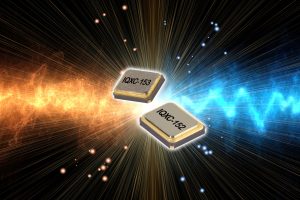Aiming to bridge the link between R&D into graphene’s properties and making its application into products on an industrial scale, the National Physical Laboratory (NPL) and the National Graphene Institute (NGI, pictured) at the University of Manchester, have set up a graphene characterisation service. Graphene is stronger than steel, yet is lightweight and flexible, it is electrically and thermally conductive ...
Monthly Archives: July 2018
Boost-converter eval board maximises runtime for wireless devices
An evaluation board from Recom, maximises runtime for small battery-powered wireless devices. The R-78S evaluation board (R-78S3.3-0.1-EVM) for Recom’s 3.3V R-78S boost converter is now available from Dengrove Electronic Components. The evaluation board maximises runtime by generating a regulated 3.3V output as the battery discharges to as low as 0.65V. Test points measure load current and voltage to help predict the ...
Naughty, but fascinating – hobby lock-picking
I watched my tablet entranced as someone called the LockPickingLawyer did what it said on the tin. This all started when one of the high-security Yale ‘Euro’ locks that I fitted to my house jammed – it is at the repairers now. Anyway, I googled it to see if this was a known problem – it does not appear to be ...
Making America Resurgent Again
33 years after Sematech, the Americans are embarking on a new semiconductor R&D programme which could be just as significant. Unlike 1985, when the Japanese had overtaken the Americans in memory process technology and in semiconductor market share, today’s threat from China is less immediate. But the current Electronics Resurgence Initiative (ERI) could turn out to be just in time ...
Thalia and Catena deliver first analogue IP re-use projects
Thalia Design Automation and Catena have delivered the first of their analogue IP reuse projects. The two companies have worked together to migrate Catena’s WiFi and variants of Bluetooth IP including a low-power version, between multiple sub-40nm process nodes and foundry providers. Analogue IP providers increasingly need to respond to customer demands for absolute flexibility in their choice of foundry provider ...
An iron-based 2D material from nature
An international team has added another two-dimensional material to the expanding list that started with graphene. Hematene is a three-atom-thick iron oxide mono-layer, which has been made at Rice University in Texas by exfoliating it from the naturally-occurring iron ore heamatite (or ‘hematite’). Transmission electron image shows a single sheet of hematene. Scale bar 0.5μm Liquid exfoliation was used, a ...
IQD launches quartz crystals operating at up to 200MHz
IQD has launched a range of quartz crystals which can operate in the fundamental mode up to 200 MHz. The quartz crystals are housed in an hermetically sealed 2.5 x 2.0 x 0.6mm (IQXC-152) and 2.0 x 1.6 x 0.5mm (IQXC-153) ceramic 4 pad package, 2 of the pads are grounded to the metal lid to improve the EMI. In the ...
IIoT consortium formed
Advantech, Behr Technologies (BTI), Hitachi Solutions America, and Microsoft are collaborating to deliver wireless communications for private industrial internet of things (IIoT) networks. The joint effort will provide a mass-market, end-to-end wireless gateway to ensure connectivity with sensors for production-level industrial and commercial applications. This collaboration aims to meet growing demand in the marketplace for robust and comprehensive out-of-the-box wireless ...
Tencent joins LoRa Alliance
Tencent has joined the LoRa Alliance to develop LoRaWan technology. Tencent has invested significantly in technology and applications for LoRaWAN and will support further development of the LoRaWAN ecosystem. The company also announced plans to build a LoRaWAN network in Shenzhen with local partners. Finally, it provides device-edge-cloud LoRaWAN solutions on its network for a wide variety of IoT applications ...
NASA makes ultra-cold atoms in space
Researchers from NASA’s Cold Atom Laboratory (CAL) have produced clouds of ultracold atoms called Bose-Einstein condensates (BECs) aboard the International Space Station (ISS), representing the coldest experiments ever conducted in space. BECs, which can reach temperatures just above absolute zero, the point where atoms should theoretically stop moving entirely, have never previously been produced in orbit. The scientists produced the ...
 Electronics Weekly Electronics Design & Components Tech News
Electronics Weekly Electronics Design & Components Tech News







